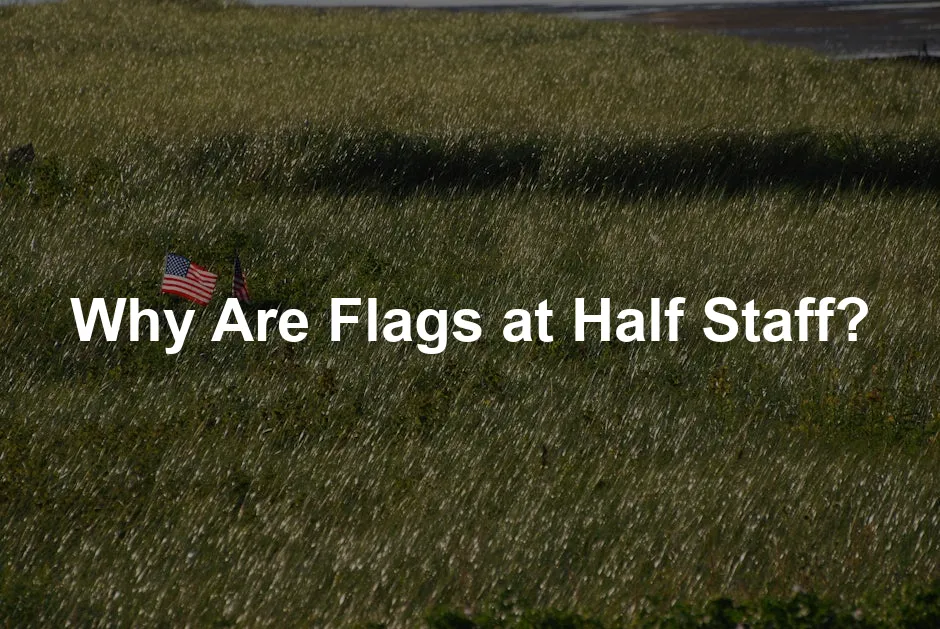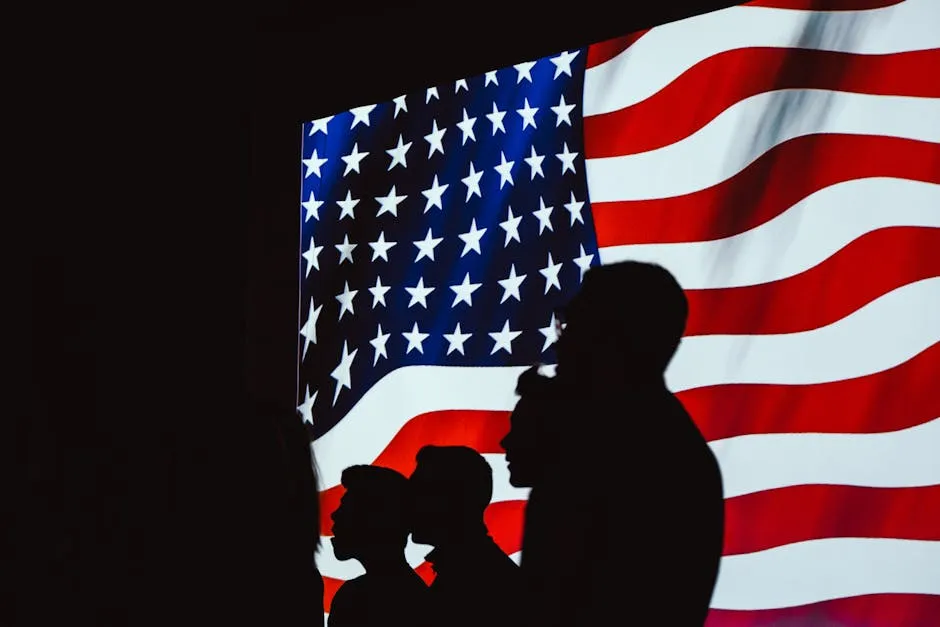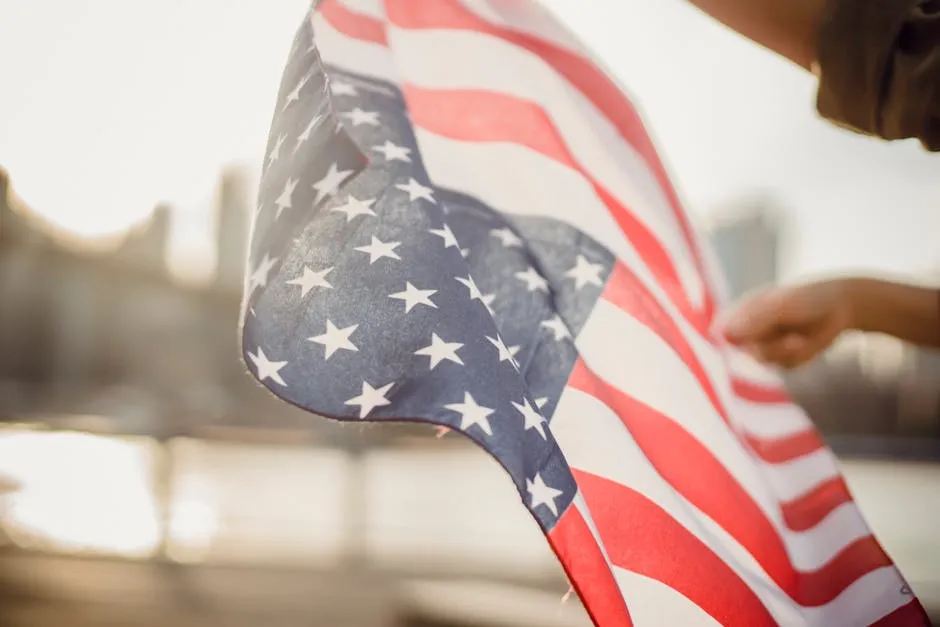
Why Are Flags at Half Staff?
Introduction
Have you ever strolled by a flagpole, only to notice the flag hanging lower than usual? This simple sight carries profound meaning. Flags at half-staff symbolize mourning and respect. They are not merely decorative; they express a shared sense of loss. It’s a powerful signal to the community. When flags dip, it’s a moment of collective reflection.
Many people see half-staff flags but might not grasp the reasons behind this tradition. Is it a remembrance of a fallen leader? A memorial for lives lost? This blog post aims to shed light on the historical roots, cultural significance, and legal guidelines surrounding this poignant practice. By the end, you’ll have a richer understanding of why flags are lowered and what it means for us all.
Flying a flag at half-staff isn’t just about protocol. It’s about honoring those who have made sacrifices or suffered tragic losses. Whether in response to a national tragedy or in memory of notable figures, this act of solidarity unites us. It’s a reminder that we are all part of a larger community, bound by shared experiences of grief and respect. So, let’s dive into the fascinating journey of half-staff flags and discover what they truly represent.

Speaking of flags, if you’re looking to elevate your own flag display, check out this American Flag 3×5 ft – Heavy Duty Nylon. This beauty is durable enough to withstand the elements while proudly showcasing your respect for the country.
Summary of Key Points
To ensure a thorough understanding of flags at half-staff, here’s a concise overview of the main points covered in this article.
First, let’s clarify the term “half-staff.” In the U.S., this refers to flags flown below the top of the pole. The term “half-mast” is used primarily for flags on ships. This practice has historical roots dating back centuries, originally linked to maritime customs.
Half-staff flags serve multiple purposes. They are commonly displayed upon the death of notable individuals, including government officials and military personnel. National tragedies, like mass shootings or natural disasters, also prompt flag lowering. Additionally, specific memorial days, such as Memorial Day and Patriot Day, are designated for this observance.
Legally, only certain officials can issue half-staff orders. This includes the President, governors, and mayors. They determine when and where flags should be lowered. Notable examples include proclamations for significant events, such as the death of influential leaders or days of national mourning.
Public participation is key. When flags are lowered, it invites everyone to join in the observance. It’s a collective act of remembrance that fosters a sense of unity and respect. Understanding these protocols enhances our appreciation of the meaning behind half-staff flags, encouraging us to honor those they commemorate.

The Significance of Half-Staff Flags
Understanding Half-Staff
When we talk about a flag at half-staff, we’re referring to a flag that flies below the top of the pole. This position serves as a visual representation of mourning and respect. It’s a poignant reminder of shared grief, a silent gesture that speaks volumes. The flag droops down, not just in height, but in spirit, inviting us to pause and reflect on the loss being honored.
You might wonder why we call it “half-staff” on land but “half-mast” on ships. It’s simple! “Half-mast” is a nautical term, while “half-staff” is used on land. This distinction highlights the maritime origins of the tradition, where flags would be lowered on ships to signify mourning. So, next time you see a flag at half-staff, remember it’s not just a flag; it’s a heartfelt salute to those we’ve lost.

If you’re interested in learning more about the history of flags, consider picking up The American Flag: A History. This book dives deep into the symbolism and significance of the flag, making it a great read for anyone wanting to appreciate the flag’s role in American culture.
Historical Context
The practice of flying flags at half-staff traces back to the 17th century. Sailors would lower their flags as a sign of respect for deceased shipmates or other mourned individuals. Over time, this custom evolved and found its way to land-based protocols. The significance of half-staff flags grew as nations adopted the practice, formalizing when and why flags should be lowered.
Different cultures interpret this tradition in unique ways. For instance, in the United States, half-staff flags honor notable figures, such as government officials and military members. Meanwhile, countries like Canada and Germany have specific days designated for this solemn observance. It’s fascinating how a simple act transcends borders, yet the underlying emotion remains the same—respect and remembrance.
Throughout history, half-staff flags have marked significant events, from national tragedies to the deaths of influential leaders. Each time a flag is lowered, it resonates with a collective sorrow, reminding us of our shared humanity. Whether in response to an individual’s passing or a national event, the act of lowering the flag serves as a bridge connecting us to our past.
In modern times, the use of half-staff flags continues to evolve, reflecting societal changes and cultural shifts. Today, many countries have established protocols to guide when flags should be flown at half-staff. These guidelines ensure that the act remains consistent and respectful, reinforcing its significance in the fabric of public life.
Recognizing these historical roots adds depth to our understanding of half-staff flags. They’re not merely pieces of fabric; they’re symbols of collective mourning. Each time we see a flag lowered, it prompts us to acknowledge the lives touched by loss, fostering a sense of unity during difficult times.
As we navigate through the complexities of life, these flags stand as reminders of resilience and respect. They encourage us to take a moment, reflect, and honor those who have made significant contributions to our lives or communities. This practice serves as a powerful testament to our enduring capacity for empathy and connection, bridging generations and cultures through the simple act of lowering a flag.
In essence, half-staff flags encapsulate a rich tapestry of history, emotion, and cultural significance. They remind us that even in moments of sorrow, we are united in our shared experiences and commitments to remember those who have gone before us.

National Tragedies
Flags are lowered to half-staff during national tragedies. These moments often include mass shootings, natural disasters, or significant loss of life. When such events occur, the nation collectively grieves. Lowering the flag symbolizes this shared sorrow and respect for those affected.
Take, for instance, the aftermath of a mass shooting. The country reels, and communities unite in grief. Lowering the flag serves as a powerful acknowledgment of the pain felt by victims’ families and friends. It reminds us that we are not alone in our suffering. In these moments, the flag’s position becomes a beacon of empathy, signaling to everyone that we stand together, even in our darkest hours.
Natural disasters also prompt this poignant gesture. When hurricanes wreak havoc or wildfires devastate communities, flags at half-staff resonate with those enduring loss. It’s a way to express solidarity with survivors, offering a moment of reflection and remembrance for lives affected. The lowering of the flag during such times serves as a reminder of our shared humanity and the resilience that binds us.

In the spirit of remembrance, consider getting a Half-Staff Flag Pole Adapter to easily display your flag at half-staff. This handy tool helps ensure you’re always prepared to honor those who have passed.
Designated Days of Remembrance
Certain days are earmarked for half-staff observances, deeply embedded in American culture. Memorial Day, for example, is a day of tribute to those who sacrificed their lives for freedom. Flags fly at half-staff until noon, allowing us to reflect on their bravery and remember their contributions.
Another significant day is Patriot Day, observed on September 11. This day marks the anniversary of the tragic attacks in 2001. On this day, flags are lowered to honor the lives lost and the heroes who emerged. It’s a moment of national unity, as families and communities come together to remember and heal.
These designated observances create a sense of continuity and respect in our culture. They remind us of the importance of remembrance and the collective responsibility to honor those who have served and suffered. By participating in these rituals, we affirm our commitment to keeping their memories alive, fostering a culture of gratitude and awareness.

Guidelines for Displaying Flags
When displaying flags at half-staff, it’s essential to follow specific protocols. First, always raise the flag to full staff before lowering it to half-staff. This brief moment at the top symbolizes respect before the flag is lowered. Similarly, at the end of the day, the flag should be raised back to full staff before being taken down.
Different states may have their own guidelines regarding half-staff displays. For instance, in Arizona, flags must be lowered for seven days upon the death of an incumbent state officer. In Wisconsin, flags are required to be lowered for the death of military members and certain public figures. Always check your state’s regulations to ensure proper observance.

Examples of Recent Half-Staff Proclamations
Flags across the nation often fly at half-staff to honor significant individuals or events. Here’s a look at some recent proclamations:
- Massachusetts
- Governor: Maura Healey
- Action: Flags at half-staff statewide.
- Date: October 7, 2024
- Illinois
- Governor: JB Pritzker
- Action: Flags to be flown at half-staff per the Illinois Flag Display Act.
- Date: October 7, 2024
- Connecticut
- Governor: Ned Lamont
- Action: Flags lowered for Robert Sharkevich Sr., Wethersfield Volunteer Fire Department member.
- Дата: October 7, 2024
- Maine
- Governor: Janet Mills
- Action: Flags lowered in remembrance of lives lost and injured.
- Date: October 25, 2024
- New Mexico
- Governor: Michelle Lujan Grisham
- Action: Flags at half-staff for former state senator John Arthur Smith.
- Date: October 7, 2024
- Georgia
- Governor: Brian Kemp
- Action: Flags at half-staff for Sheriff Henry Cullen Talton, Jr.
- Дата: October 23, 2024
- Kentucky
- Governor: Andy Beshear
- Action: Flags at half-staff for a soldier who died in the Korean War.
- Date: October 21, 2024
- Missouri
- Governor: Mike Parson
- Action: Flags flown at half-staff at government buildings and emergency medical stations.
- Date: October 7, 2024
- Delaware
- Governor: John Carney
- Action: Flags lowered in remembrance of James T. Vaughn.
- Дата: October 16-17, 2024
- Minnesota
- Governor: Tim Walz
- Action: Flags lowered for law enforcement ranger Kevin Grossheim.
- Дата: October 7, 2024
- Tennessee
- Governor: Bill Lee
- Action: Flags flown at half-staff in memory of Governor Winfield Dunn.
- Дата: October 4, 2024
- Virginia
- Governor: Glenn Youngkin
- Action: Flags flown at half-staff in memory of those lost.
- Дата: October 7, 2024
- Iowa
- Governor: Kim Reynolds
- Action: Flags at half-staff to honor lives lost during a tragic event.
- Дата: October 7, 2024
- Arkansas
- Governor: Sarah Huckabee Sanders
- Action: Flags at half-staff in memory of lives lost in an attack on Israel.
- Дата: October 7, 2024

Conclusion
Flying flags at half-staff is a powerful gesture of mourning and respect. It signifies unity in grief, creating a communal bond among those who observe this practice. Each time a flag is lowered, it serves as a reminder of lives lost and contributions made.
Being mindful of this tradition allows us to participate in a larger narrative of remembrance. When you see flags at half-staff, take a moment to honor the sacrifices made by individuals and communities. It’s a simple yet profound way to connect with others, reminding us that we are all part of a shared story of loss and resilience.
Encourage others to join in this practice. By lowering flags when appropriate, you contribute to a collective expression of respect. Together, we uphold the memory of those we have lost, ensuring their legacies continue to resonate within our hearts and communities.

FAQs
What is the difference between half-staff and half-mast?
The terms “half-staff” and “half-mast” often cause confusion. In the U.S., “half-staff” is used for flags displayed on land, while “half-mast” refers specifically to flags on ships. When a flag is at half-staff, it is lowered below the top of the flagpole, symbolizing mourning and respect. So, next time you see a flag drooping in sorrow, remember—it’s half-staff on land, half-mast at sea!
Who decides when to lower flags to half-staff?
The authority to declare flags at half-staff typically lies with the President, state governors, or the mayor of Washington, D.C. These leaders issue proclamations based on significant events, such as the death of notable figures or national tragedies. When they make these declarations, it reflects a collective mourning across the nation or specific states.
Are citizens required to lower their flags?
Great question! Citizens are not legally required to lower their flags at half-staff. However, many choose to do so as a personal gesture of respect and solidarity during times of mourning. It’s a way to join in the collective remembrance and honor those who have made significant contributions or sacrifices.
How long should a flag be flown at half-staff?
The duration for which a flag is flown at half-staff varies. For instance, when a President passes, flags are typically lowered for 30 days. In contrast, flags remain at half-staff for 10 days for a Vice President or the Chief Justice. On days of national mourning, like Memorial Day, flags are usually at half-staff until noon. Always check the specific proclamation for precise durations.
What are some notable days when flags are flown at half-staff?
Several significant days are set aside for half-staff observances. Memorial Day is one of the most recognized, where flags are flown at half-staff until noon to honor fallen military personnel. Another important day is Patriot Day, observed on September 11, marking the anniversary of the terrorist attacks. Additionally, National Firefighters Memorial Day and Peace Officers Memorial Day are occasions when flags are routinely flown at half-staff. Each of these days serves as a poignant reminder of sacrifice and unity.
Please let us know what you think about our content by leaving a comment down below!
Thank you for reading till here 🙂
To understand more about the reasons behind the flag being at half-staff, check out this article on why is the flag at half-staff today 2023.
And for those who want to commemorate their loved ones in style, consider a Flag Display Case – Solid Wood with Glass. This elegant case will protect and showcase your flag, ensuring it remains a lasting memory for generations.
All images from Pexels




